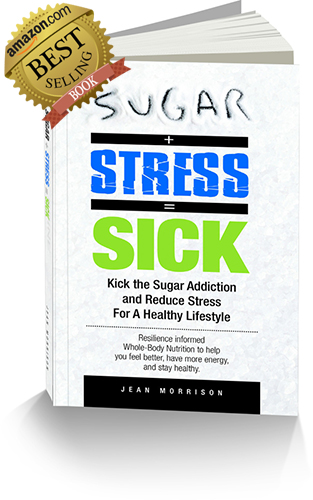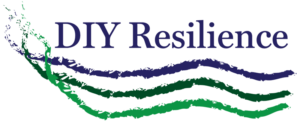What Is Resilience?
Introductory Story:
Three girls are born on the same day in different parts of the world.
One is raised in a wealthy household, given everything to meet external needs but is raised by emotionally remote nannies, given the best education money can buy but little in the way of social emotional learning save the rule that one must never display their emotions.
Another girl is raised in a low income household, given enough to eat and attend school but is raised by emotionally available parents and family members who pass on skills they’ve learned to walk through tremendous stress and hardship with resourcefulness and helping each other. The dangers of the local environment claim the life of her two brothers though, when she is just 4 years of age.
Another girl is raised in a moderate-income household, by a hard-working single parent she sees in the mornings, nights and weekends, some extended family, and an experienced caregiver. She received an education at a highly rated public school, lives in a fairly safe neighborhood where people know each other and picks up a few problem-solving and random ideas about getting by in life. A neighbor sexually assaults her at age 7.
Which one of these girls do you think will be most equipped to face adversity with resilience?
The answer is, we do not know. Resilience is about what is learned on your journey, not a destination. Each girl had her own mix of advantages and disadvantages from family, trauma, tragedy, or threat. How each girl makes use of their advantages while honoring their vulnerabilities plays a role in their resilience. Their beliefs about life and how to interact with others will also play a role.
If you are not sure what resilience is, well…. you’re not alone. You can find any number of definitions on the subject from psychology-based to various skills used to relieve stress. Assigning meaning to one of the most important life skills and processes, something that at any moment may include our innermost beliefs, emotions, problem solving ability and ultimately … our survival, is not easy. But here goes…
What is Resilience?
Resilience is unique to each individual because our body and minds are uniquely our own. Each of us inherited a unique set of genes from our parents that affects our temperament. We have our own lived experience and have developed patterns based on assumptions we made about life (real or imagined). And each of us is living our own life circumstance with all its challenges and benefits.
So, resilience is the ability to take a clear look at what is going on, find the best solution to challenges that honor your strengths and vulnerabilities, then returning to calm directly. It is living, growing, and returning to rest, the cycle of life at its core.
You can learn to improve resilience. Resilience involves things you can’t change, your genetics, but also your thoughts and behavior patterns. It is not easy, but you can learn to change attitudes and assumptions that no longer work for you, and you can change how you act. This involves spending some time getting to know yourself; your core emotional responses, underlying beliefs, and what you do daily in relation to problem solving, stress and stress relief.
Any number of means to relieve stress produce results for many, breathing exercises, meditation, contemplation, and mindfulness for instance. But none of these methods works for all. The key to your resilience lies in your ability to explore enough to know what works for you, and then actually do it.
What Resilience Isn’t
Being resilient does not mean that a person will stop experiencing difficult emotions or situations. Resilience is about adaptability rather than perfection. Think about it, if you never experience hardship how would you develop the ability to watch and learn, or adjust based on similar circumstances?
Resilience can be learned because it involves behavior, thoughts, and actions that you developed or learned. Walking is a behavior you developed and learned. It would be difficult to change the way you walk, but if you discovered a new way to walk that would result in a better life you might find a way to change no matter how hard to do.
Resilience is about improving your emotional muscle memory, problem solving ability, and your self-care. That takes a deeper level of self-knowledge to do.
Know Yourself
What if you knew all there was to know about every difficult emotion you would ever feel? And knew exactly what to do or who to ask for help to get back on track as soon as possible? Would this relieve stress, allow you to relax even during tough times, and have a more positive outlook? Would you feel like you had confidence in your ability to adapt to meet about any challenge head on?
To know and accept yourself is to empower yourself. The more a person understands about key emotions, beliefs, boundaries and needs, the easier it is to make clear decisions; decisions that help keep us on track to achieve our life goals. When a person has a healthy, positively focused balance of knowing and accepting, the likelihood of enjoying life despite challenges is increased.
Let us consider just the emotional management part of resilience for a moment. Studies show that those who can label their emotions move more quickly from reacting to clear thinking. This means they can improve how fast they act when they perceive a potential problem or threat. You can learn to recognize a wide array of emotions, accept them, and practice any number of appropriate responses… like a student of martial arts learning how to fight. When you get your black belt in knowing yourself, you can see yourself and act in the world on a whole new level.
People who recognize needs and strengthen vulnerabilities recover more quickly with less damage to their mind and body. This is particularly important for people who have experienced abuse, neglect, and trauma at any point in their life. Long-term studies conducted by the CDC (Center for Disease Control) show that people exposed to abuse, neglect, trauma, and violence in childhood have a much greater instance of chronic disease, addiction, and mental health conditions that tend to take as many as 20 years off their life. This makes getting help to label emotions and re-balance the mind and body critical. Relieving stress is a quality of life matter for everyone but can be a matter of life and death for trauma survivors.
The exact process of gaining this kind of self-knowledge/self-care is unique for each person because each person’s life experience is unique. Remember the stories of the three girls at the beginning of this article? Here is an idea of what you might focus your attention on if you were wanting to improve managing emotions:
- Find difficult emotions,
- Practice naming emotions,
- Identify sense, memory, and physically positive triggers,
- Practice redirecting difficult emotions,
- Understand personal boundaries and your resilience zone
- Practice calm and rest techniques, like breathing, meditation, natural contemplation, yoga, etc.
Some may wish to include careful desensitization of abuse and trauma with an experienced coach or therapist, especially if you have experienced neglect, abuse, violence, or trauma. It is wrong to suggest everyone who experiences trauma should be able to do that by themselves. No one gets to be resilient completely on their own.
By now you might see why gaining self-knowledge is so key to resilience. You might also see why most human beings could do with a resilience course, a great coach, or a skilled therapist. These skills are not specifically taught or encouraged in most cultures. It is left to each of us to take responsibility for emotional management and self-care. Whether a person is a high powered professional, a student, or a home worker, relearning emotional management and self-care will require some experienced help. In the end, it is well worth the time and energy to improve resilience and relieve stress.
Cultivate Healthier Thinking
Big picture resilience is healthy resilience. What you give your attention to plays a key role in how you adapt to change and face challenge. Adaptability includes getting creative and seeing an obstacle from points of view you are not used to. Focus on gathering the best information available and put together a balanced solution without getting stuck in irrational or magical thinking. All of us have some emotional patterns born in childhood or following trauma that may be more based in emotion than reality. You cannot change emotions that arise or stressful events that occur, but you can change how you see and respond to them.
Change is Part of Life. But people like to live according to patterns. We create and repeat familiar patterns that we feel make living more comfortable. Struggle comes when change interrupts, or threatens to interrupt, those patterns. Struggle big and small are inevitable. And change may mean a delay or an end to some dreams and goals. But change also brings opportunity for growth. You can take advantage of opportunity faster when you accept change more quickly. Who knows? Your new patterns may end up providing you more comfort than before.
Do not let yesterday use up too much of today. Everyone one of us is influenced by conscious and pre-conscious beliefs about people, relationships, work, authority figures, society, culture, and even how to solve problems. Some of those beliefs help. Some do not. With a little self-inspection, you can let go of what is not working for you now and focus instead on what does. Then you can spend more time enjoying today.
People who have goals have something to look forward to. And people who have a strong support system know that there are people there to catch them when they fall. Create a set of achievable goals and track progress daily, weekly, and monthly. Include how you will celebrate at the achievement of each goal and then, make sure you celebrate. Make sure to line up support and mentors; people who can help you achieve success. Goals and a shared investment in success creates hope. You have this!
Positive Matters. Standing strong in the belief that you will get past your challenge is more than half the battle. People who manage emotions and have a strong support system are more optimistic and resilient. Focus on what you can control, move forward, and know you have support. Help is available if you need help achieving a more positive mindset.
Everyone has at least some difficult emotions. You cannot keep difficult emotions from arising but you can learn to redirect and see them so you can get to solving problems more quickly. Difficult emotions coming up means your brain is working, signaling you that there is something to worry about. It does not matter whether the threat is real or perceived. It matters what you do. It is not easy, but you can learn to stop and take your time at the first sign of difficult emotions and move to calm more quickly with or without stress relieving tools. Activities like breathing exercises, sensory or physical redirection, meditation, contemplation, mindfulness, and about anything else that does not cause harm. An experienced resilience coach can help you change these sorts of entrenched patterns of behavior.
Let's work together
Resilience can be acquired, but resilience involves deeply rooted patterns of behavior that have been learned and practiced throughout one’s life. To develop resilience, you’re going to have to challenge some of your assumptions about life, learn a few new tricks, and remake your daily habits.
jean@diyresilience.com
Phone
(818) 699-1035




